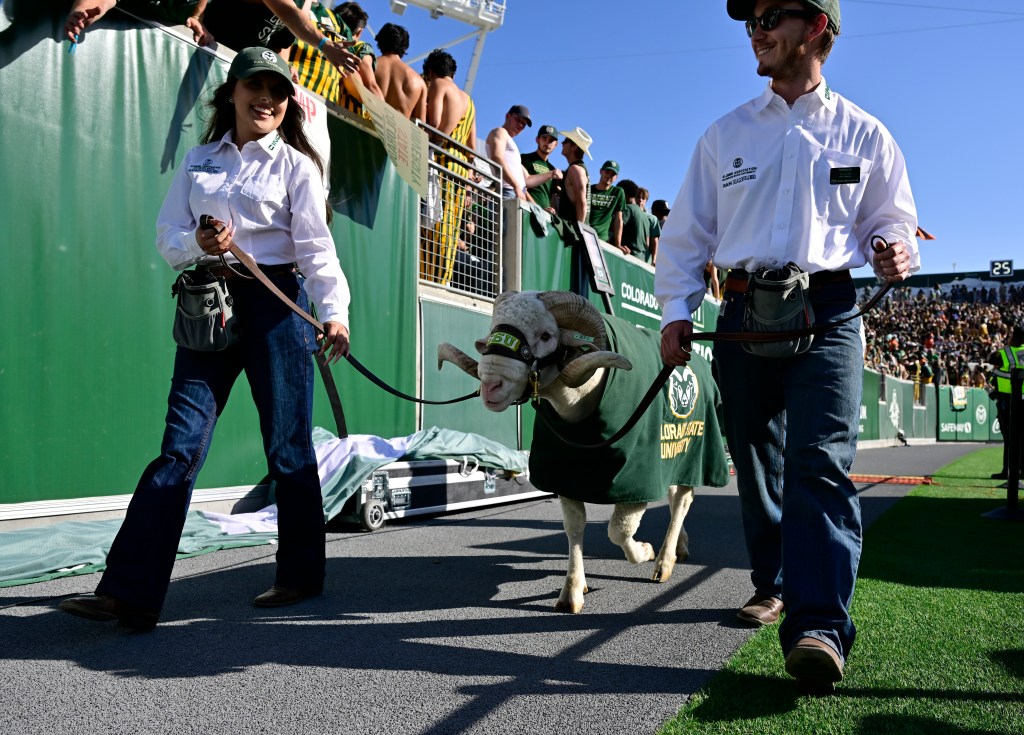FORT COLLINS — Bob Thompson’s first pro tip? If the Pac-12 commissioner starts promising you the moon, Cam The Ram, make sure you don’t get caught seeing stars.
“It’s a different family,” Thompson, the former Fox Sports Networks president and Big Ten Network co-founder, told me by phone before the 93rd edition of the Rocky Mountain Showdown kicked off at Canvas Stadium. “Same name. Different family. Different relatives.”
Different time. Different landscape. So how, I asked Thompson, can CSU, one of the newest members of the new-look Pac-12, avoid falling victim to some of the same pitfalls that bit CU in the backside when they joined the league 14 years ago?
“Let’s see,” Thompson replied, then paused. “How about, it’s important to have a strong conference office.”
He laughed.
“I think I can probably start and end with that.”
We both laughed at that one.
The near-death of the Pac-12 as we knew it was the work of many hands. Former commissioner Larry Scott just happened to have the bloodiest of the lot.
Promised television eyeballs never materialized. Promised television payouts landed millions short of expectations. The Pac-12 Network never found an established network partner, the way ESPN glommed onto the SEC and Fox linked arms with the Big Ten.
CU turned Ralphie west and found itself playing in front of more alumni, aligned more with academic peers who shared Boulder’s mission and culture.
But in doing so, the Buffs lost their identity. Their swag. The Berkeley of the Big Eight became just another Berkeley in a league that already had one. In the meantime, Buffs football all but vanished from living rooms east of Wyoming.
Same name. Different family. Different relatives. Different expectations.
“Oh, I think it’s a positive for (CSU),” former Big 12 and Big Eight commissioner Chuck Neinas told me of the Rams’ move from the Mountain West.
“No. 1, if they had been left behind when this happened, that would’ve been disastrous for the program. But that they’re moving with the best of the rest to the Pac-12, I mean, that has to be a positive. Because they’re in good company.”
Neinas wasn’t at the Showdown. But he attended the Canvas Stadium opener in August 2017 against Oregon State — a 58-27 CSU win and arguably the biggest moment for the building before Saturday night.
“The amazing thing was (CSU) came in under budget and on time,” Neinas recalled. “Which is unheard of.”
How much credit for the Pac-12 invite should the stadium get? And how much credit should go to Dr. Tony Frank, chancellor of the CSU system, and to ex-Rams athletic director Jack Graham, for getting Canvas off the ground?
“I think there’s two things there,” Neinas replied. “No. 1, (the Pac-12) gets the Denver market. That, I think, plays a big role. And obviously, CSU has shown they’re committed to football with that stadium.”
The Rams marrying the smaller Pac-12 is a victory with asterisks. A step up with caveats. This program is setting itself among the best of the rest, the cream of the Group of 5 leagues, starting in 2026. In 2031, though, once a bunch of current rights contracts expire, television executives could wipe the chess board clean again.
“It’s not a giant step up. (The Rams) should be happy,” Thompson continued. “If you look at the AAC as the other major (Group of 6), this certainly would appear to me to vault the Pac-12 above that. So if you’re one of the top-5 rated (champions), you’re in.
“It’s not going to be (a Power 5 league), I just don’t see it. It’s going to be one of the best of the rest. But it’s not going to get to the ‘A’ level. You’re just going to get out-voted (by the bigger leagues).”
Same name. Different family. Different relatives. Different tax bracket.
CU’s Pac-12 overestimated its power and pull nationally while overrating its century of partnerships. For CSU’s Pac-12, the size of the stick it swings will depend on who else besides the Rams, San Diego State, Boise State and Fresno State ultimately joins the circuit,
The TV payouts will depend on that, too. The Rams listed $3.6 million in total broadcast revenues in their ’22-23 NCAA fiscal report, and roughly $3 million of that was estimated to be made up of Mountain West distributions.
The AAC’s deal with ESPN reportedly pays out roughly $7 million per member. Can the reborn Pac-12 land $10 million per school?
Another laugh.
“(CSU is) going to do better,” Thompson said. “Can they do three times better (than before)? That seems a little heavy.”
